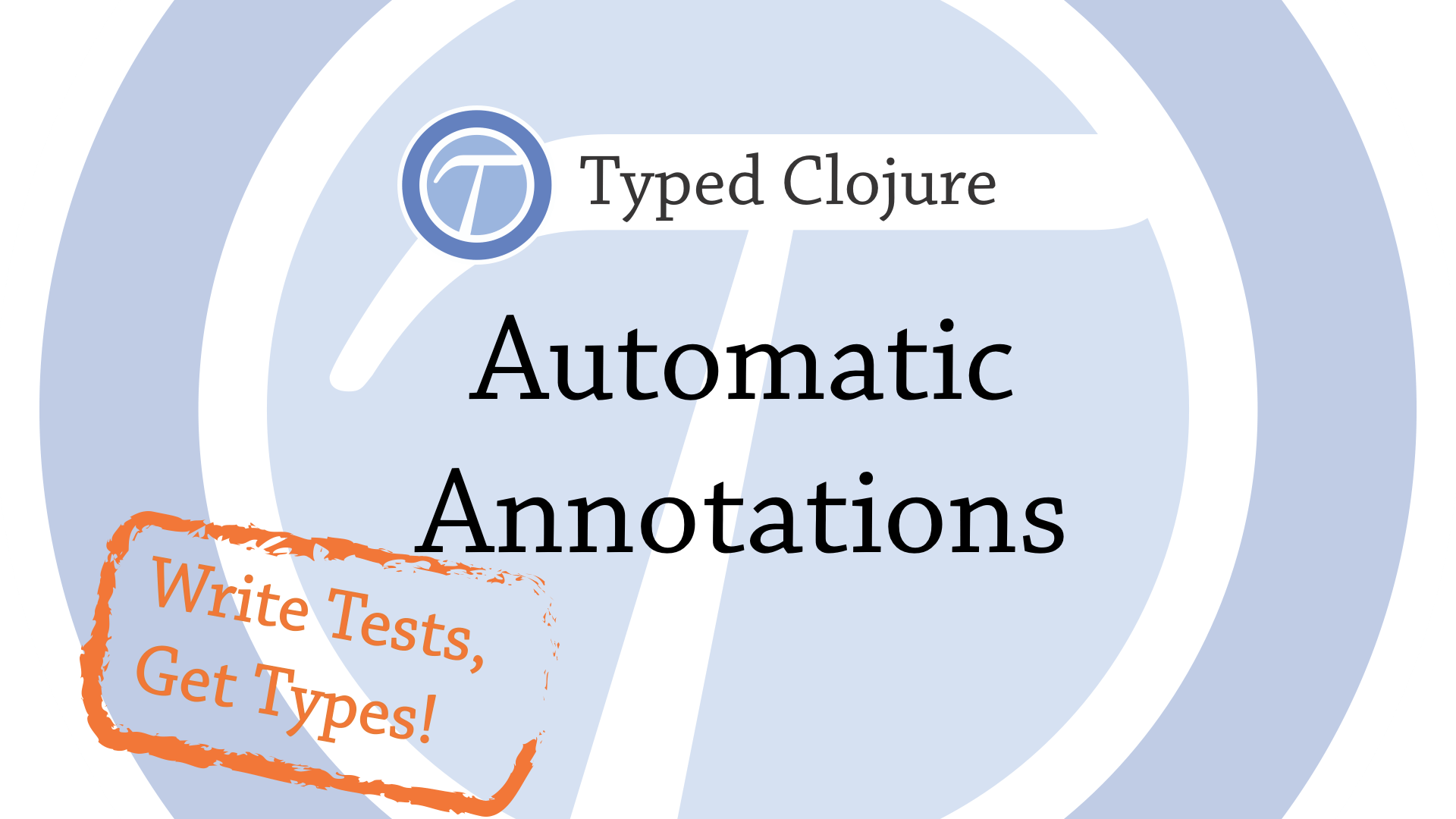
We have covered some of the reasons why automatic annotations are useful in my previous post, now let’s build up the infrastructure necessary to perform it from scratch.
This work is part of a crowdfunding effort, please support the campaign here!
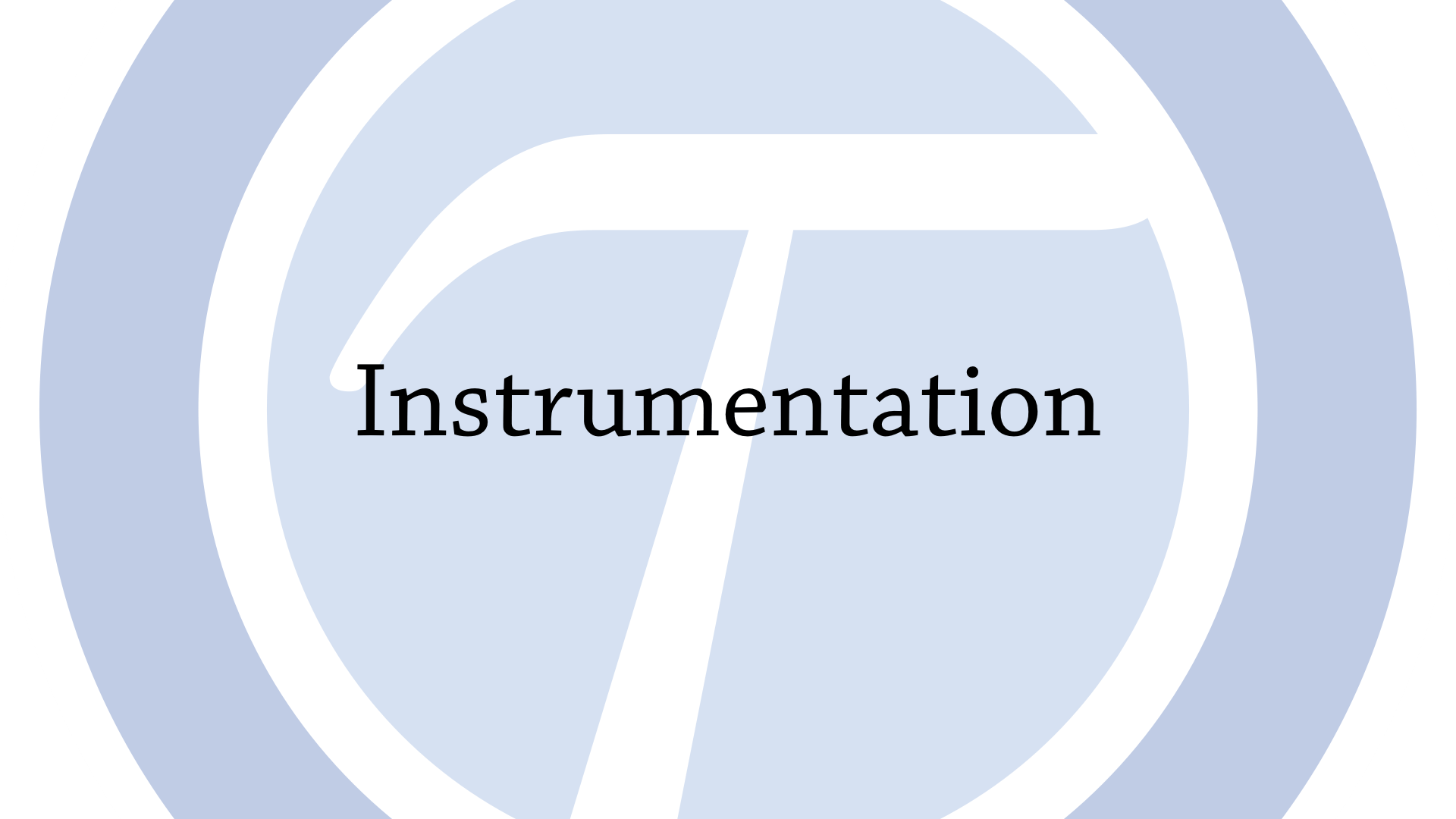
At the center of our approach is the track function.
It wraps values and remembers a ‘path’
to report the source of the value.

How is track defined?
Let’s add support for flat values.
Inferring flat values
Here’s how you might define track to remember the type
of integers.
(defn track [v path]
(cond
(integer? v) (do (type-at-path (-class (class v)) path)
v)
:else v))
-class creates a core.typed type of a given class;
type-at-path associates the given type with the current
path.
A ‘path’ is a sequence of ‘path elements’. Our first path
element is the ‘var path element’.
To track the value of a def, we rewrite it with
the following transformation.
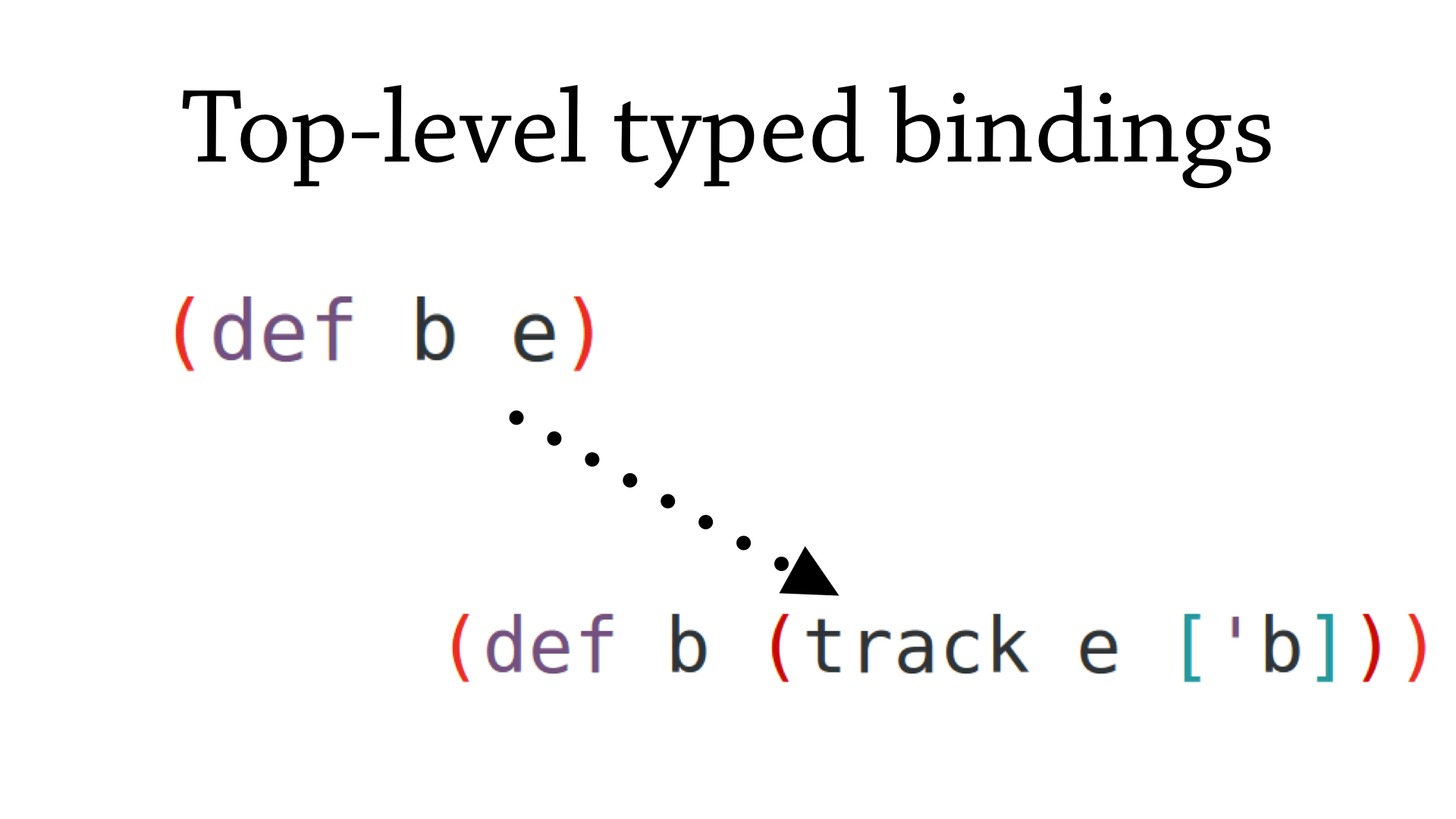
The we track a def by tracking its right-hand side as
a singleton path containing just the var name.
Recall from the previous post, we are interested in two kind of annotations: user-level vars and libraries.
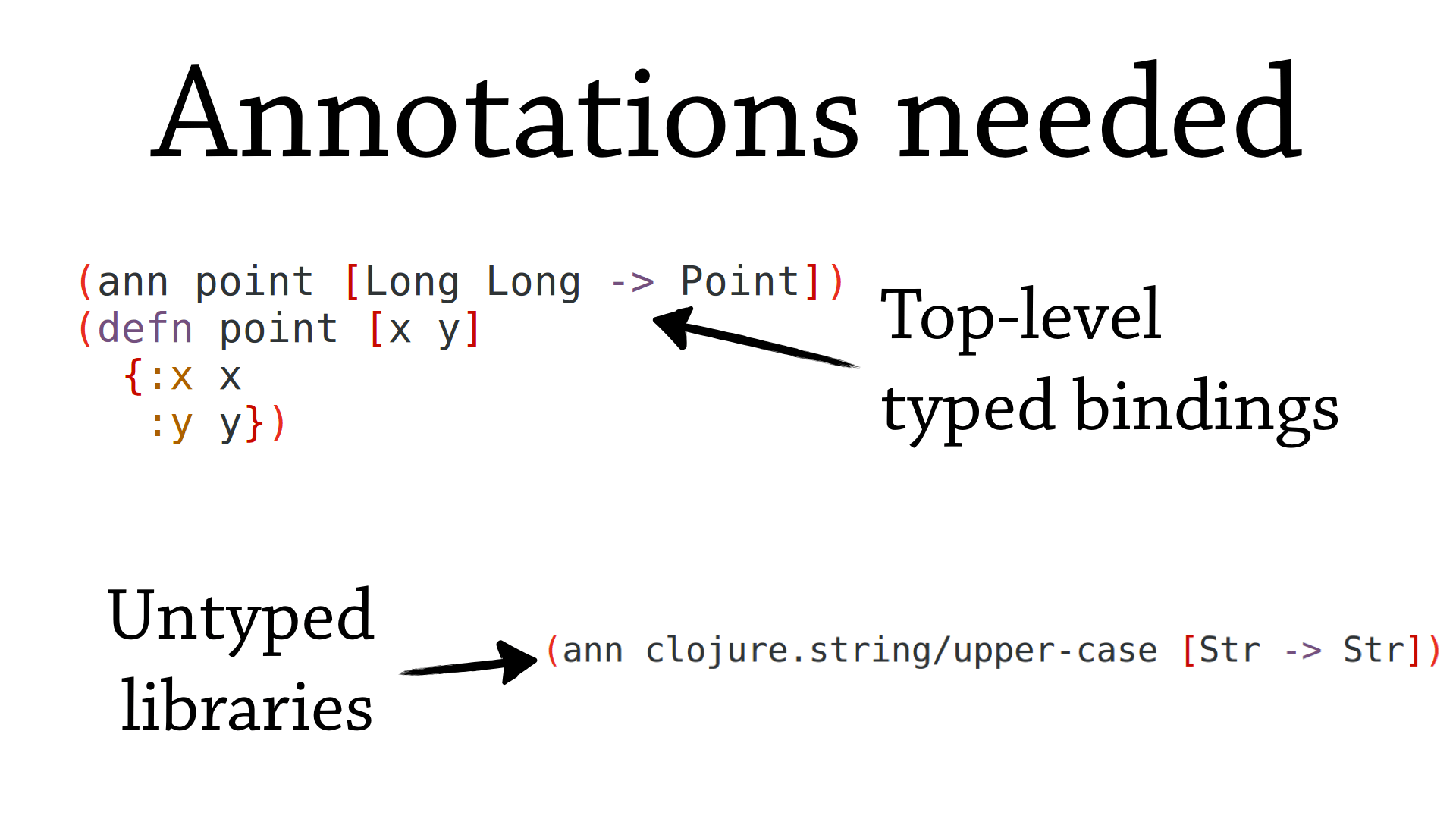
We can track user-level vars by directly transforming
the def expressions before they are compiled.
To intercept library functions, we need to wrap each
library var dereference in a track.
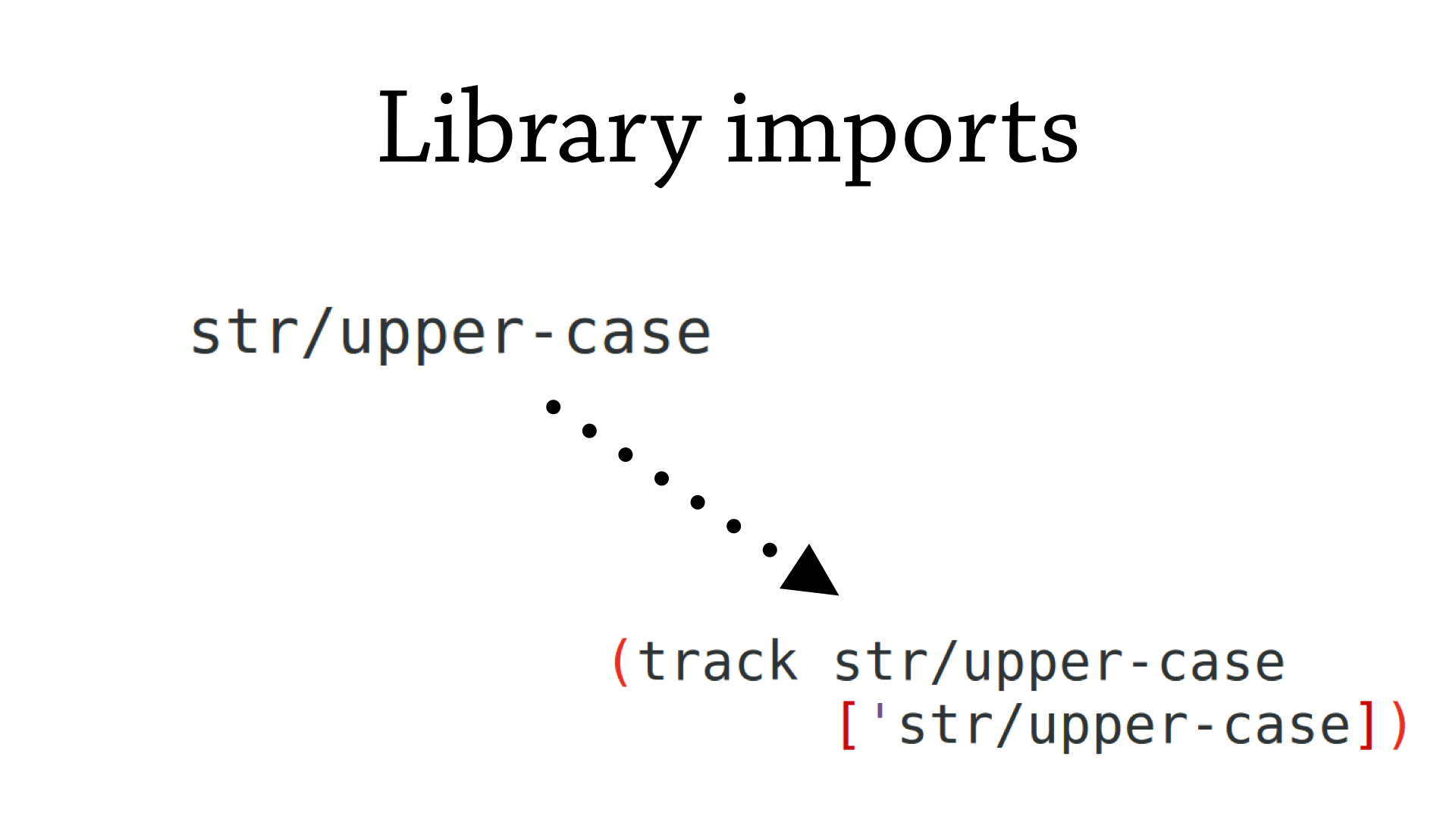
Here’s how the evaluator step through an evaluation of tracking a def.
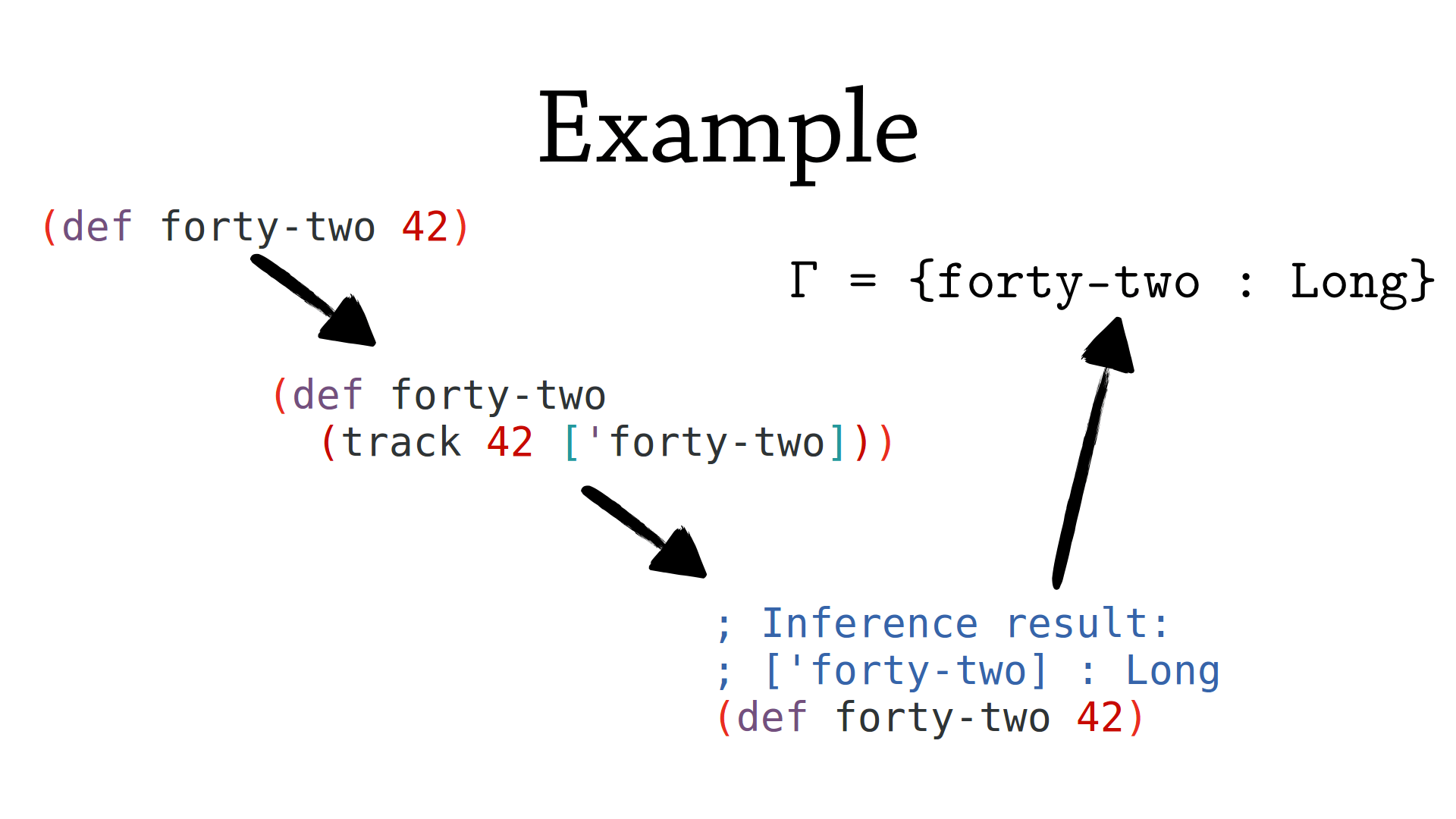
- The initial
defis what the programmer actually writes. - We rewrite the plain
definto atrackthat remembers the value as coming fromforty-two. - We remember that
forty-twois of typeLong. - Using this type environment, we can then output the following correct annotation:
(ann forty-two Long)
Extensions
From here, we have many options to extend our algorithm. In the following posts, we’ll talk about:
- inferring function types,
- inferring sequence types,
- different merging strategies for types,
The basics, however, remain the same, so this help should help as a reference when we discuss these extensions.
This work is part of a crowdfunding effort, please support the campaign here!